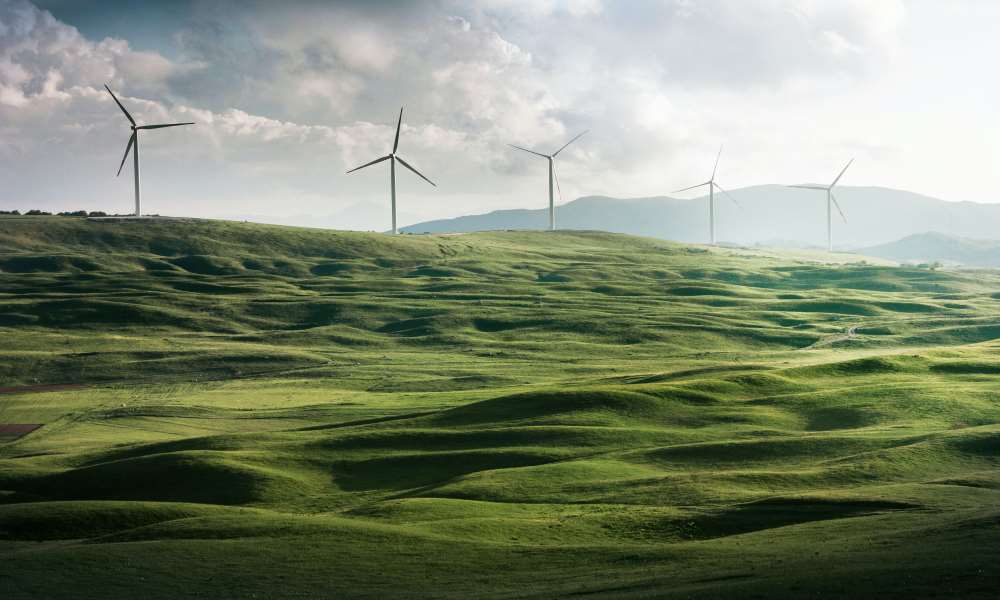The project that could spearhead SA's reindustrialisation
The Presidency has revealed a badly kept corporate secret about a project that could spearhead South Africa's reindustrialisation.The newly released Just Energy Transition (JET) implementation plan shows that ArcelorMittal South Africa has partnered with an Irish clean energy giant to revive its Saldanha plant and produce a product there that'll soon be in very high demand in the developed world: Low-carbon steel.
Dublin-based Mainstream Renewable Power will produce up to 80 000 tonnes of green hydrogen every year, largely for ArcelorMittal South Africa's factory on the west coast, which was shut in 2020 because it was no longer economically viable. According to the JET planning document, production should start in around four years' time.
ArcelorMittal SA, which hasn't revealed much detail about the Saldanha project itself, will use the hydrogen to make 1.2 million tonnes of direct reduced iron a year. That iron, in turn, will be converted into low-carbon flat steel.
Whereas the group's Saldanha plant was no longer feasible in its previous life, it could become seriously competitive in the global market now that demand for clean steel is surging.
The fact that this project seems to be gaining momentum is excellent news indeed. It's the prime example of how global efforts to slash emissions are translating into South Africa's biggest industrialisation opportunity yet.
That's because we're better placed than most countries to produce the clean energy needed to make low-carbon goods.
In particular, we have major competitive advantages in green hydrogen, which is becoming integral to the decarbonisation of manufacturing processes.
Emissions
For the uninitiated, green hydrogen is an emissions-free energy carrier and fuel made by splitting water into its individual components – hydrogen and oxygen – using an electrolyser. To be considered "green", the electrolysis process must be powered by renewable energy plants like solar or wind farms.
That hydrogen can then be burned to release the stored energy. When that happens, the hydrogen molecules react with oxygen to form water once again. Throughout this process, no planet-warming carbon dioxide or methane is created – the only emission is water.
In the case of steelmaking, hydrogen is used in place of carbon-based reductants to extract iron from the ore it was wedged in. That iron is then used in an electric arc furnace or other steelmaking process to produce steel.
South Africa's competitive advantage in green hydrogen stems from our enviable solar and wind resources, our existing hydrogen production expertise, and our unrivalled platinum reserves.
Aside from steel, we can use green hydrogen to make low-carbon ammonia, fertiliser, methanol, glass, and cement.
South Africa has lost its competitiveness in many of these areas, but that could change quickly if we make the most of our hydrogen opportunity.
Projects
According to the JET implementation plan, South Africa has 24 green hydrogen projects in the works, worth more than R300 billion. Nine of those projects have been granted 'strategic integrated project' status by the state (the Saldanha plant isn't one of them).
They include a green hydrogen and ammonia project at the Prieska Power Reserve, which is being co-developed by Mahlako a Phahla Investments – a black women-led infrastructure investor.
Then there are several projects aimed at decarbonising the transport sector through the production of hydrogen fuel cells for trucks, and sustainable aviation fuels.
And there's even an energy generation project. HDF Energy plans to build a green hydrogen-fired power plant that'll yield 1,800 gigawatt hours of clean electricity a year, per the planning document. If it goes ahead, that facility will operate like a gas-fired plant, but cleaner.
There are, of course, plans to export hydrogen and its derivatives to far-away markets.
But some engineers think that's wishful thinking. Hydrogen doesn't travel well, and we're too far from off-takers in the Global North. Converting hydrogen into derivatives that can withstand long journeys is possible, but it's extremely energy-inefficient.
If we want to export our green molecules, it's best done by making things with them. And therein lies South Africa's biggest-ever industrialisation opportunity.
Hopefully the Saldanha steel plant revival is a roaring success that paves the way for steel mills and other factories across the country to follow suit. The market for zero-emissions goods is about to explode as the EU and other jurisdictions introduce carbon border taxes.-Fin24



